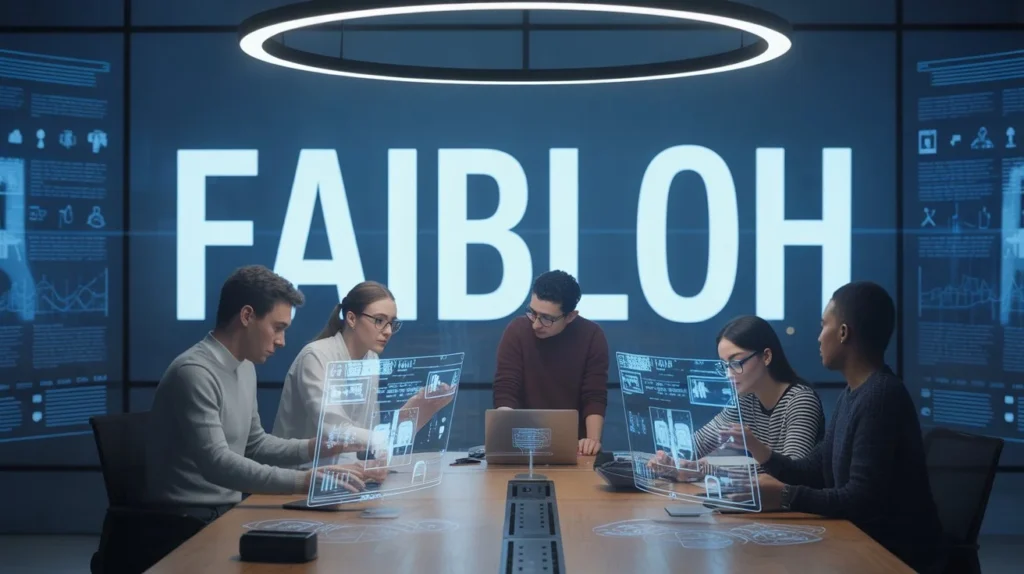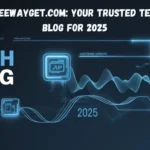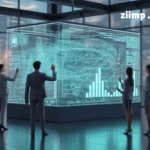The word faibloh may sound unfamiliar at first, yet it is increasingly appearing in online spaces and conversations. At its core, this concept represents a mindset tied to adaptability, resilience, and creativity in the digital era. It embodies a way of thinking where individuals and businesses strive to balance innovation with practicality. For many, the idea is not just a keyword but a symbol of how to stay relevant in an age where technology evolves faster than ever.
People searching for this term are usually looking for clarity: What does it mean? How is it applied? And most importantly, how can it improve their personal or professional lives? Understanding the topic means going beyond a definition and uncovering its real-world implications.
Why Faibloh Matters Today
We live in an environment where traditional systems are constantly disrupted by new technologies. Businesses, entrepreneurs, and even students feel the pressure to adapt quickly. Faibloh offers a framework that blends flexibility and growth, allowing individuals to face challenges without being overwhelmed.
For professionals, mastering this mindset means keeping pace with trends without losing focus on long-term goals. For businesses, it creates a culture where creativity flourishes and employees embrace innovation. On a personal level, the approach helps people find balance between ambition and well-being.
The Definition of Faibloh
Faibloh can be defined as a principle of aligning adaptability with strategic thinking. It is the ability to remain firm in values while being flexible in methods. Unlike rigid systems that crumble under pressure, this orientation encourages resilience. It’s about accepting change not as a threat but as an opportunity to grow.
The definition also extends to digital spaces where the idea represents the power to navigate online trends, social interactions, and technological shifts without losing authenticity.
Benefits of Embracing Faibloh
The advantages of living and working with this spirit are numerous. For one, it improves problem-solving. Instead of resisting change, you learn to work with it. This mindset also reduces stress since adaptability naturally lowers resistance to uncertainty.
In workplaces, the practice drives innovation. Teams that lean into it are more likely to experiment, test, and discover new approaches. On a personal level, the habit can strengthen resilience, making it easier to bounce back from failures.
Moreover, adopting faibloh enhances decision-making. It allows leaders to stay rooted in their mission while still adjusting tactics as circumstances evolve.
Challenges of This Mindset
While the approach brings many benefits, it also comes with challenges. Some individuals find it difficult to let go of old habits. Resistance to change is natural, but it can block the positive impact of the framework.
Another challenge is finding balance. Too much flexibility without structure may lead to confusion or inconsistency. That is why the idea is not just about being adaptable but also about maintaining a clear vision. Businesses that ignore this balance often face setbacks because they lose direction while trying to adjust to every trend.
Real-World Examples of the Framework
To truly understand the theme, consider how it manifests in the real world. Tech companies often embody it when they pivot strategies quickly. For instance, when streaming platforms moved from simple video hosting to creating original content, they demonstrated faibloh by adapting to changing demands.
On a personal level, entrepreneurs who shift their business models to meet new market realities also show the power of this mindset. Even students who adjust their study methods in response to digital learning challenges are practicing the principle without even realizing it.
In the Workplace
In professional environments, the mindset helps organizations foster resilience. Teams guided by this idea can handle sudden disruptions, whether they come from technology, competition, or global events. Leaders who adopt it empower employees to think creatively and take calculated risks.
Companies that thrive on the practice also tend to be more innovative. They create cultures where failure is seen as a learning opportunity, not a setback. This leads to stronger engagement and higher productivity, and it keeps faibloh practical rather than theoretical.
Personal Growth
On an individual level, the approach plays a vital role in self-development. It teaches people how to adapt to life changes while staying true to their values. Instead of fearing uncertainty, those who practice this method see it as a natural part of growth.
For students, the concept means experimenting with different learning strategies until they find what works best. For professionals, it involves embracing continuous learning and remaining open to new ideas, which is exactly how practicing faibloh builds momentum.
Connection with Technology
The rise of digital transformation makes the topic more relevant than ever. Technology changes so fast that relying on rigid methods can make individuals and businesses obsolete. In that gap, faibloh bridges flexibility with sensible adoption of tools, systems, and platforms.
For example, businesses using artificial intelligence in customer service are showing how a fresh mindset integrates new technologies into traditional structures. Similarly, individuals who embrace online platforms for personal branding showcase the same adaptable attitude in action.
A Step-by-Step Guide to Applying Faibloh
- Start with self-awareness. Recognize your strengths and weaknesses, then identify where flexibility is needed so you respond to change with intent rather than impulse.
- Set clear goals. Define outcomes and non‑negotiable values to keep direction steady even as your methods evolve with new data and constraints.
- Welcome new ideas. Explore alternatives, invite feedback, and test variations. Curiosity is the fuel that turns uncertainty into discovery.
- Run small experiments. Pilot initiatives with tight scopes, measure results, and document learning. This protects resources while accelerating insight.
- Iterate with discipline. Keep what works, improve what’s close, and retire what doesn’t. Use simple metrics and short cycles to prevent drift.
- Build resilience. Reframe setbacks as inputs, not verdicts. Celebrate useful failures and make faibloh a habit through regular reflection and adjustment.
Building a Culture of Adaptability
In organizations, building a culture of this kind starts with leadership. Leaders must encourage open communication and reward creativity. Employees should feel safe experimenting and suggesting innovative solutions.
Training programs that focus on adaptability, critical thinking, and resilience can strengthen faibloh across teams. Over time, this creates an environment where challenges are seen as opportunities rather than threats.
Leadership
Effective leadership thrives on this principle. Leaders who understand its importance are better equipped to guide their teams through uncertainty. They know when to stand firm and when to adapt, striking a balance that earns both trust and respect.
Those who practice the approach also set examples for others. Their actions inspire employees to adopt similar mindsets, leading to stronger overall performance and durable outcomes.
Innovation
Innovation cannot exist without flexibility, and this framework provides the foundation for that flexibility. Companies that embrace the approach are quicker to adopt new technologies, enter new markets, or shift business models.
On an individual scale, faibloh fuels creativity. Artists, writers, and entrepreneurs who embrace experimentation often discover breakthroughs that would not have been possible in rigid systems.
The Emotional Side
This path is not purely strategic; it also has an emotional dimension. It builds resilience against stress, uncertainty, and setbacks. By adopting the mindset, individuals learn to manage anxiety and turn challenges into learning experiences.
Emotional intelligence is key in this process. Being aware of one’s feelings and those of others helps apply the practice more effectively in relationships and teamwork, which in turn reinforces progress.
The Future
As the digital world continues to expand, the theme will become even more significant. Artificial intelligence, automation, and rapid market shifts will demand adaptability from everyone.
Those who embrace the approach will stand out as leaders, innovators, and problem-solvers. The concept will likely evolve further, becoming an essential part of personal and professional success, with faibloh acting as a quiet anchor.
Faibloh
At its heart, the term represents a powerful balance between flexibility and focus. It is not a passing trend but a necessary mindset for thriving in today’s unpredictable world. Whether in business, education, or personal life, the idea teaches us how to adapt without losing ourselves.
FAQs
What does this concept mean?
It refers to aligning adaptability with strategy, so you can change methods without abandoning core values and long‑term aims.
Why is this mindset important in business?
Organizations that operate this way are better prepared for disruptions, more innovative, and more resilient against market shifts that might otherwise derail plans.
How can I apply the approach in my life?
Stay open to new ideas, set clear goals, and build resilience. Use small experiments and quick feedback loops to refine what works for you.
Does the framework only apply to technology?
No, while it’s highly relevant to digital transformation, it also supports leadership, personal growth, and emotional well‑being across many contexts.
Can this way of working reduce stress?
Yes. When you adapt rather than resist uncertainty, stress often decreases because you focus on action, learning, and progress instead of fear.
Is it a long‑term strategy?
Absolutely. The orientation is not a quick fix but a durable practice that supports sustainable growth over time, even as markets keep changing.
Conclusion
This concept is more than just a term—it’s a guiding principle for thriving in a fast‑changing world. It encourages balance, resilience, and creativity while equipping individuals and businesses with the tools to face uncertainty. Whether you are a student, professional, or entrepreneur, embracing the approach can transform the way you respond to challenges and opportunities.
Now is the perfect time to put the ideas into motion. Start by making small adjustments in your daily routine, cultivate resilience, and let adaptability become your strength. Commit to one experiment this week, review the results, and then iterate. The future belongs to those who act with purpose, learn quickly, and adjust with confidence.






